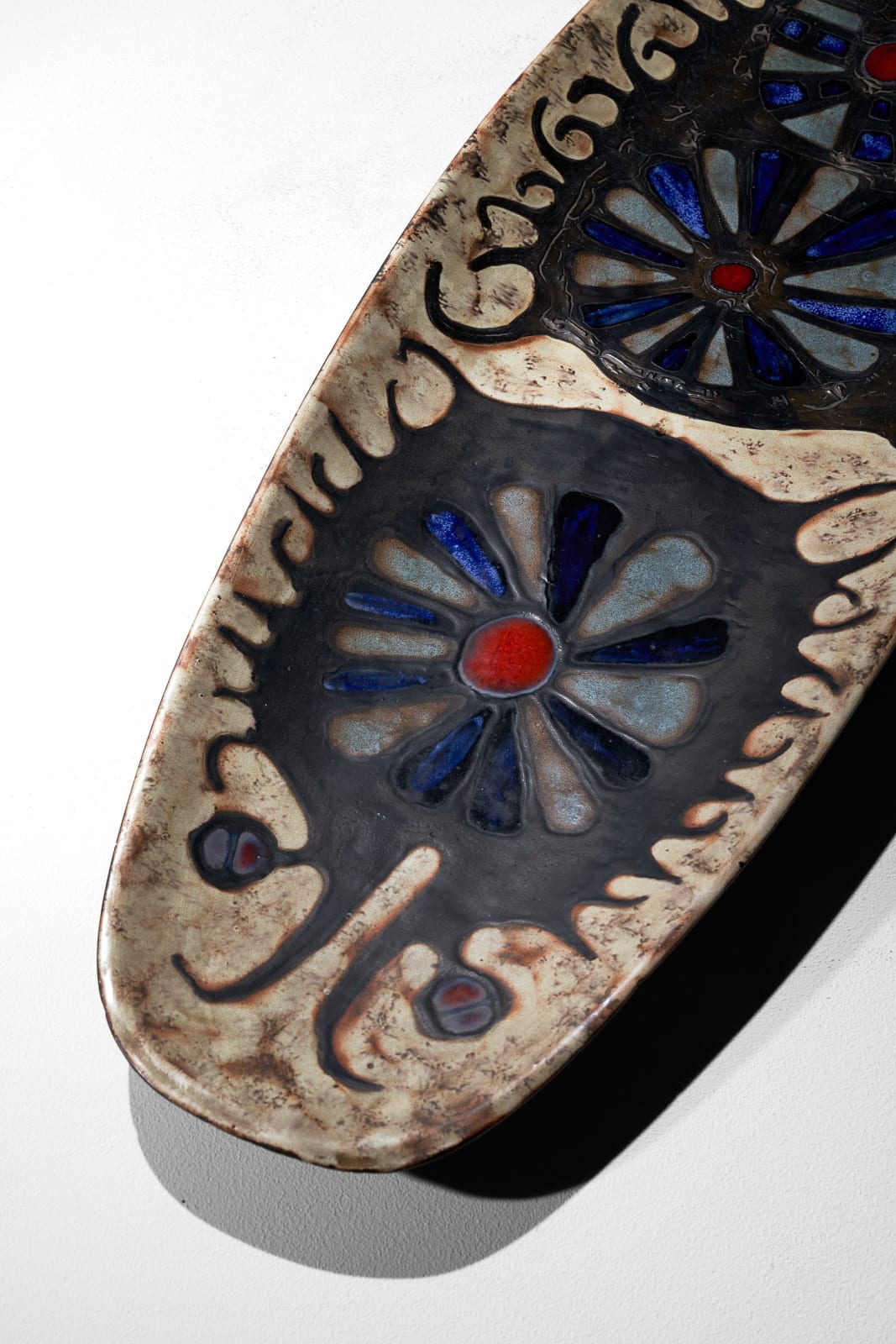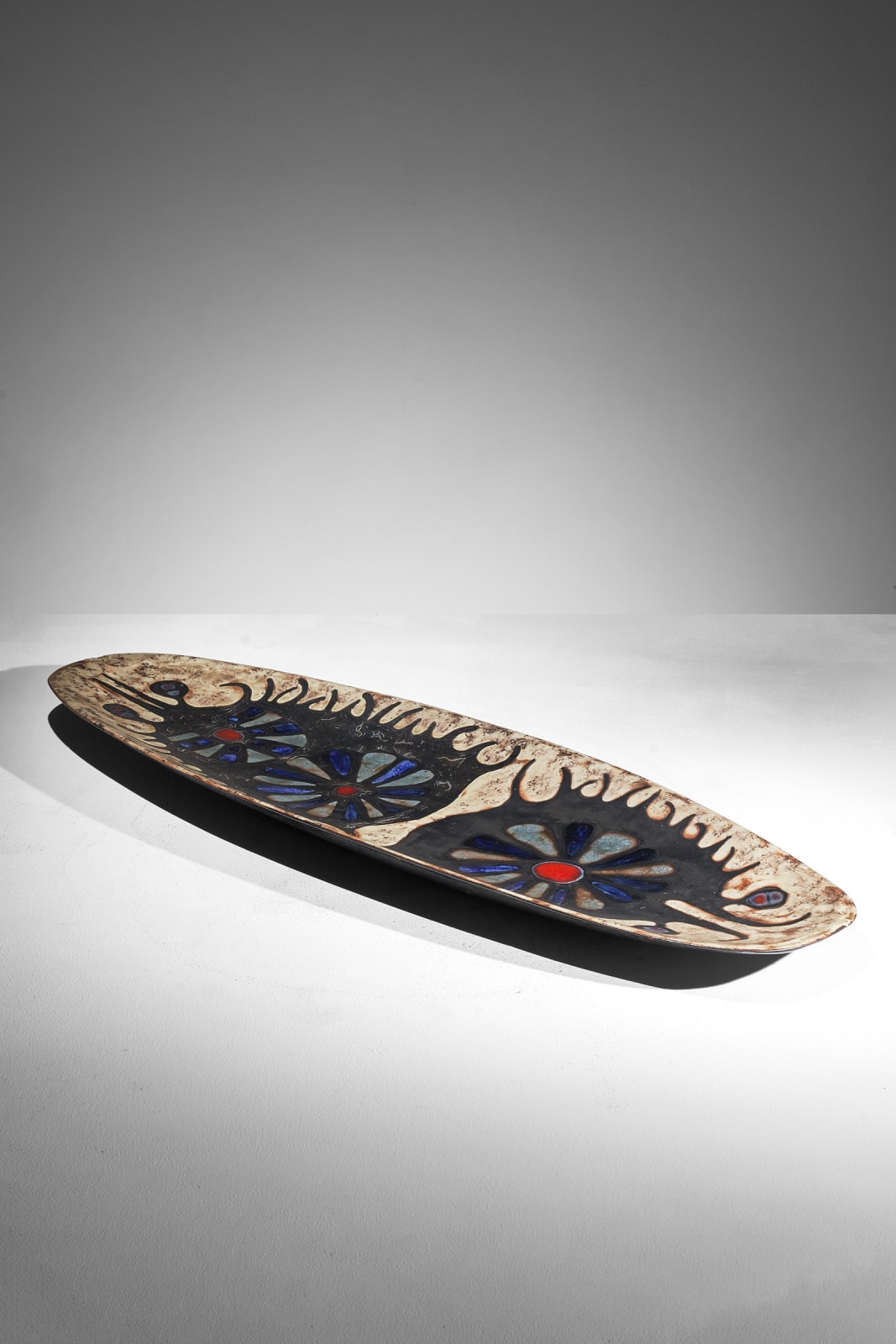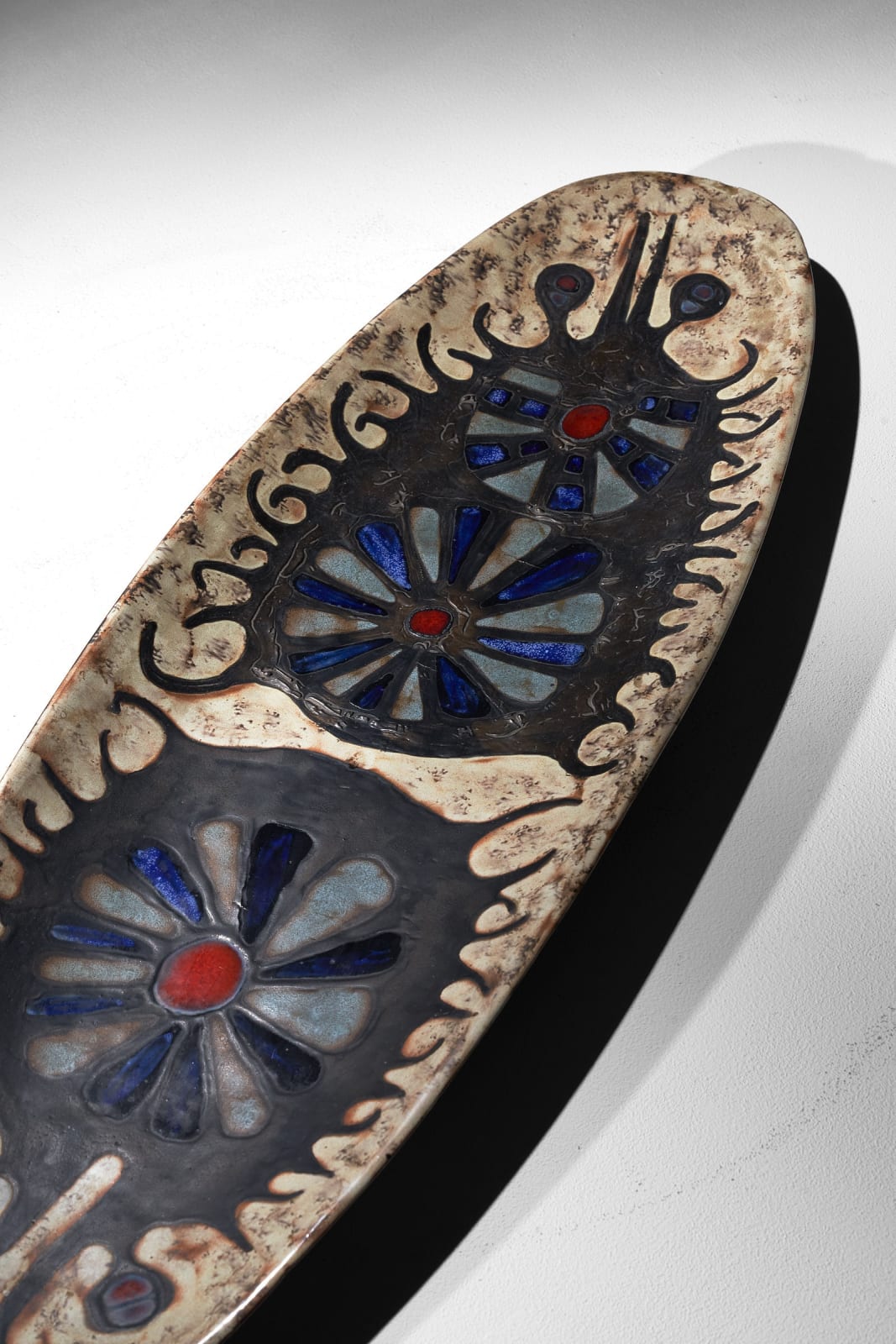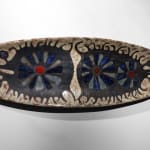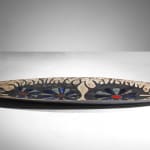Rogier Vandeweghe
Further images
Rogier Vandeweghe was a Belgian ceramist, glassblower, calligrapher and painter.
He was born in 1923 as the youngest son in the family of Alberic Vandeweghe and Emma Maria Mestdagh. A few years later, the family moved to Beernem.
Rogier married Myranna Pyck in 1954 in Bruges (Sint-Anna).
Early period
Rogier received his artistic training at Sint-Lucas in Ghent (1940-1945) and briefly apprenticed with Joost Maréchal in 1947. Not long after, he opened a ceramics workshop in Aalter (1948-1949) with his brother Laurent Vandeweghe (1916-2002). Soon after they started a larger business. Their studio was named "Perignem" ("by the fire"). Rogier profiled himself as an art director in charge of designing and painting ceramic objects. In 1954, he also started making stained-glass windows.
Two styles dominated the design: copies of antiques (Delft and Strasbourg) on the one hand, and rather folkloric decoration in the style of Joost Maréchal on the other. From the start, in addition to these ornaments and utensils, various reliefs and sculptures (large and small) were produced, intented for churches, monasteries and private homes. Rogier called on the sculptors Cyriel Maertens and Jacques Van de Vijvere to design the sculptures. He was also occasionally commissioned to create murals for churches in West Flanders.
Modern forms and decorations were the exception rather than the rule in the workshop. His brother Laurent, who had no artistic training, was in charge of various technical tasks (clay preparation, filling and unloading the kilns, etc.).
Personal work and artistic career
Rogier left the workshop in 1955 and, together with his wife Myranna Pyck (who had worked at Perignem as a ceramic painter since 1952), founded a new ceramics and stained-glass studio in Sint-Andries (Bruges), where he produced extremely subtle enamel work. Atelier Rogier Vandeweghe started modestly with two employees, a glazier and an 'all-rounder'.
After building a modern villa with a large workspace, their studio grew into a company with 20 employees. In 1960, Rogier and Myranna named their company "Amphora". Rogier's creations received international recognition with a second prize at the Concorso Internazionale della Ceramica in Monza (Italy, International Ceramics Competition in Monza) in 1960 and a prize at the International Handwerkmesse (International craft fair) in Munich in 1963. The ultimate crowning achievement for Rogier's ceramic creations came in 1964 with a "Medaglia d'Oro della Presidenza del Senato" (“Gold Medal of the Senate Presidency”) at the Concorso Internazionale della Ceramica d'Arte (International Ceramic Art Competition) in Faenza. In the 1960s, Amphora became known for its refined vases with graceful silhouettes, which Rogier Vandeweghe could indulge in as an aesthetic enthusiast. The orange-red bottle vases and round vases from 1963 to 1975 found imitation in many studios in Flanders.
